Oops - frozen raw potatoes
steff_1
12 years ago
Featured Answer
Sort by:Oldest
Comments (18)
annie1992
12 years agosteff_1
12 years agoRelated Discussions
? about 'raw freezing' slow cooker meals
Comments (10)slowlane, I make brownie mix from the King Arthur Flour recipe on their website, as well as this whole grain pancake "mix". I just use regular whole wheat flour. They also have recipes for biscuit mix and a quick mix that can be used to make muffins. Homemade Whole-Grain Pancake Mix These pancakes are just shy of 90% whole-grain; and they're absolutely delicious, featuring the sweet-nutty taste of oats and wheat. This recipe comes courtesy of Susan Reid and Susan Miller, two of the authors of King Arthur Flour Whole Grain Baking. Thanks, ladies! 4 cups King Arthur white whole wheat flour 1 cup King Arthur Unbleached All-Purpose Flour 3 1/2 cups old-fashioned or rolled oats 3 tablespoons sugar 3 tablespoons baking powder 1 tablespoon salt 1 tablespoon baking soda 1 cup vegetable oil Pancakes 1 cup homemade mix 1 cup buttermilk, or a combination of plain yogurt and milk; or 3/4 cup liquid whey 1 large egg 1) To make the mix: Grind the oats in a food processor until they're chopped fine, but not a powder. 2) Put the flour, oats, and all other dry ingredients into a mixer with a paddle. Mix on slow speed, and drizzle the vegetable oil into the bowl slowly while the mixer is running. 3) Store in an airtight container for up to two weeks at room temperature, or indefinitely in the refrigerator or freezer. To make pancakes: Whisk together 1 cup of mix, 1 cup of buttermilk (or a combination of half plain yogurt and half milk; or 3/4 cup liquid whey), and 1 large egg. Don't worry if it seems thin at first: the oats will soak up the milk, and the mix will thicken a bit as it stands. 5) Let the batter stand for at least 20 minutes before cooking. Heat a lightly greased griddle to 350�F (if you've got a griddle with a temperature setting; if not, medium-hot will do). 7) Drop the batter onto it in 1/4-cupfuls (a jumbo cookie scoop works well here) to make a 4" diameter pancake. If you have English muffin rings, use them; they make a perfectly round, evenly thick pancake. 8) When the edges look dry and bubbles come to the surface without breaking (after about 2 minutes, if your griddle is the correct temperature), turn the pancake over to finish cooking on the second side, which will take about 2 minutes. 9) Serve pancakes immediately, or stack and hold in a warm oven. Yield: a batch using 1 cup of the mix will make about 5 to 8 pancakes, depending on size. Recipe summary Hands-on time: 20 mins. Baking time: 4 mins. to 8 mins. Total time: 60 mins. Yield: 10 cups dry mix; enough for 50 to 80 pancakes Tips from our bakers ◦If you're not in the habit of having buttermilk around, reconsider: you can freeze leftover buttermilk, in 1-cup portions, for future batches of pancakes. And if you don't have buttermilk, but do have buttermilk powder, add 1/4 cup buttermilk powder to the dry mix along with 1 large egg and 1 cup water or milk. ◦These pancakes hold in a low oven for half an hour without getting tough or rubbery, and they're more than willing to act as a vehicle for any kind of fruit addition. A partial list of combinations that have made successful appearances so far: peach, raspberry, banana-walnut, cheddar-apple, blueberry, and cranberry-apricot. ◦Do you enjoy making your own Greek-style, thick yogurt by draining plain yogurt through a strainer? If so, don't discard the drained-off whey; it's a great stand-in for buttermilk in this recipe. Since it's thinner than buttermilk, you'll want to use 3/4 cup whey in place of the 1 cup buttermilk called for. ◦Variation: Add 1 tablespoon orange juice to the dry mix along with the buttermilk. We've found that the acidity and sweetness of the orange juice helps mellow the tannic taste some people perceive in whole wheat flour; while the pancakes won't have any orange flavor, they may taste slightly milder to you, if you're not a fan of whole wheat flour (but still want to get more whole grains into your diet). I agree about the soup base/bouillion/etc in most of the dry soup "recipes", the sodium level is astonishing. I think some people here found a lower sodium alternative "base" but I don't much like any of them, they taste fake to me. Good luck. Annie...See MoreNow what ? Left bag of potatoes in van overnight . Now frozen.
Comments (14)chisue asked: "Do potatoes ever freeze in the ground before they are harvested?" No. Potatoes must be harvested befoe the ground freezes. However, on farms south of the Illinois/Wisconsin border, the potato plant dies and dries in September and should be harvested by the time the vine dries. Harvesting can begin as soon as the vine dies. Potatoes can be stored outside in a thick potato mound, but the mound must be constructed in a way to keep the potatoes from freezing and elevated a bit above the average gound level; They should not experience standing water, but at the same time, they need the earthern atmosphere to preserve their moisture content. Potatoes stored in a mound are good to about mid-March following harvest. If the frost depth is 18 inches, then the walls of the mound must be thicker than 18 inches....See MoreFrozen potatoes?
Comments (7)Found this info. on the Internet on several sites: Freezing Potatoes Date: May 1989 (Revised April 1995) Source: NDSU Extension Service Nutrition Specialists You can make frozen French fried potatoes at home. The mealy type potato is best. Use mature potatoes you have stored for at least 30 days. Potatoes with a higher sugar content will brown excessively and will be less attractive. To make frozen French fries, pare and cut potatoes lengthwise into 3/8 inch strips. Rinse in cold water to remove surface starch. Dry thoroughly on a towel. Fry strips in deep fat or oil at 360 degrees about 4 minutes or until cooked, but not browned. Remove from fat and drain on absorbent paper. Do not overload the French fry basket. If you do, the fat temperature will drop and the potatoes will absorb more fat. Use just enough potatoes to cover the bottom of the basket. Cool French fried strips to room temperature and pack in cartons or other airtight containers. Seal, freeze and store at 0 degrees or lower. Homemade French fries have a short storage life, so use them within 2 to 3 months. When you use them, fry in deep fat without thawing. For skillet crisping, brown the French fries in one tablespoon of oil. A 475 F oven may be used to finish cooking and browning. For hashed browned potatoes, prepare as you would to serve. Brown only to the brown-and-serve stage, cool and package for freezing. Store frozen for one to 2 months. When you want to use them, finish cooking and browning as for regular preparation. Prepare mashed potatoes as for serving. Cool, then pack in airtight containers and freeze. Slice when ready to use and fry without thawing. You can also make mashed potatoes into mounds. Freeze on a tray and then package. Store for one month. To use, take out as many mounds as you need to fry or put on top of a casserole. They can also be reheated in the microwave. To stuff baked potatoes, remove the cooked potato from the skin, mash it and add seasonings. Return to the skin, piling lightly. Wrap each potato in airtight packaging and freeze. When ready to use, remove wrap and put directly into a 425 oven. Bake for 30 minutes. After 15 to 20 minutes in the oven, top each potato with grated cheese. FREEZING POTATOES: The best potatoes for freezing are those that have been cooked, such as mashed potato patties, baked stuffed potatoes, or french fries. Raw potatoes or potatoes in combination dishes such as soups and stews do not freeze well. Upon thawing and reheating, they tend to disintegrate, especially if the potatoes are whole or cut in large cubes. If you are preparing a combination dish for freezing, omit the potatoes and add them instead during the thawing/reheating step before serving. Partially Cooking is the Trick: Make and partially cook fries, homefries, and whatever other style first. Then freeze in portions (big or small - size doesn't matter). The real "trick" to freezing potatoes is cooking or partially cooking them first. Raw or new potatoes just don't freeze well. I think it has something to do with their water content -they turn mushy! Though it takes a little time to cook before freezing, you make up the difference on the other end, and, in my experience, don't lose any flavor. Certainly better and less expensive than commercial products....See MorePotatoes, potatoes, potatoes. Grainlady, others?
Comments (13)Well, you can send all the baby reds to me & that takes care of half your problem. Seriously though, baby reds are fantastic just boiled skin on & served w/ butter, salt & pepper. Alternatively, they're also very good roasted w/ oil & garlic. I would even mash them, skin on. That's because I just love red potatoes. Reds aren't considered a good masher. A dish that I love but my family doesn't is to grate raw potatoes, tie them up in an old dishtowel & 'wring' the excess water out of them. Heat a nice OO in a saute pan & lay the potatoes in, mashing them into a flat pancake with a spatula. (Season w/ S & P) Cook until well browned & the potatoes on top are just starting to get soft. Flip them and just a couple of minutes before they're ready to come off the stove, top w/ crab or imitation crab, cubed fresh tomatoes & fresh (preferably) basil. Sounds like a weird combo, but it really is very good, my family's opinion not withstanding. Another thing I like to do is to grate cooked potatoes and mix into pancake batter. I usually use a pancake mix. Cook your potato pancakes & serve w/ butter & hot maple syrup or just applesauce. And then there's 'New Potatoes & Green Beans'. My mom made this a lot. Cook the baby reds w/ fresh green beans seasoned w/ either ham or bacon, some onion and water to cover.. This is one of those dishes that is good overcooked to the point that the potatoes are wanting to fall apart and even better heated up the next day as leftovers....See Morearkansas girl
12 years agosteff_1
12 years agosally2_gw
12 years agosteff_1
12 years agodgkritch
12 years agoJasdip
12 years agoarkansas girl
12 years agoarkansas girl
12 years agosteff_1
12 years agoarkansas girl
12 years agoStrat
12 years agoHU-57908844
3 months agobragu_DSM 5
3 months agocolleenoz
3 months agolast modified: 3 months agochloebud
3 months ago
Related Stories

HEALTHY HOME12 Ways to Set Up Your Kitchen for Healthy Eating
Making smart food choices is easier when your kitchen is part of your support team
Full Story
FEEL-GOOD HOMESimple Pleasures: Get Cozy on a Cold Day
Some things are best when the weather is bad. Heat up some cocoa and join the discussion
Full Story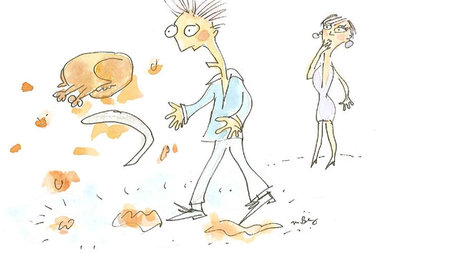
MOST POPULARThanksgiving Tales: When the Turkey Tanks
Houzz readers prove adept at snatching victory from the jaws of entertaining defeat
Full Story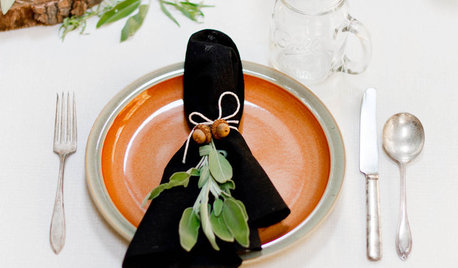

MOST POPULAR7 Ways to Design Your Kitchen to Help You Lose Weight
In his new book, Slim by Design, eating-behavior expert Brian Wansink shows us how to get our kitchens working better
Full Story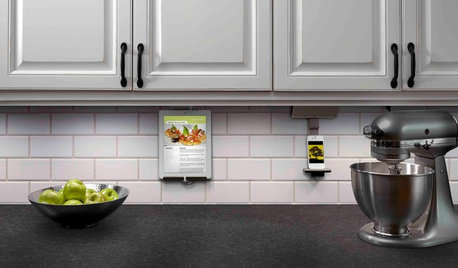
KITCHEN DESIGNHouzz Call: What’s Cooking in Your Kitchen?
Most of us turn to recipes, videos and culinary shows when we cook. Where do you set your cookbook, tablet or TV screen?
Full Story
KITCHEN DESIGN8 Kitchen Organizing Ideas for Messy Cooks
Not the clean-as-you-go type? Not to worry. These strategies will help keep your kitchen looking tidy no matter what your cooking style is
Full Story
EARTH DAYGrow a Beautiful Garden With Ecofriendly Greywater
Reducing home water waste means lower bills and a healthier planet. Here's how to set up a greywater home irrigation system that can help
Full Story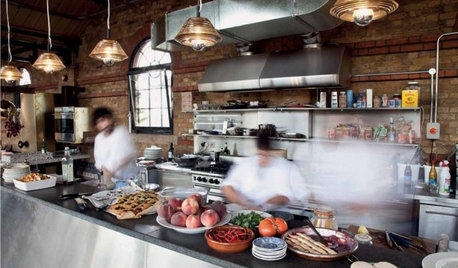
KITCHEN DESIGN16 Practical Ideas to Borrow From Professional Kitchens
Restaurant kitchens are designed to function efficiently and safely. Why not adopt some of their tricks in your own home?
Full Story
HOUSEKEEPINGHow to Fix a Stinky Garbage Disposal
No plumber’s fee or even a trip to the hardware store is required with these easy solutions
Full Story


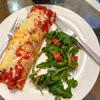
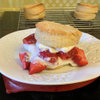
annie1992